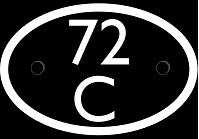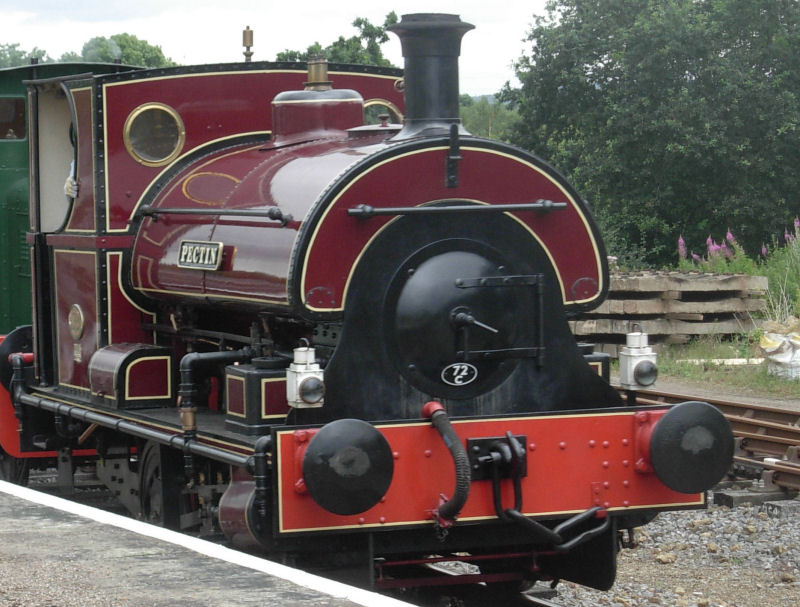| The History of 72C |

|
You may have noticed that our locomotives at the Yeovil Railway Centre carry the British Railway’s shed code 72C; this was the code for the locomotive shed at Yeovil Town from January 1948 until September 1963 when Yeovil Town was transferred to the Western Region of BR. All BR locomotives were allocated to a particular shed which had its own shed code which was displayed on an oval plate, like the one above, attached to the smokebox door of each locomotive allocated to that shed. Allocation of locomotives to an individual location has been a feature of railway operating from the earliest days. The usual description of such a home location in the United Kingdom was ‘engine shed’ and locomotives often carried the name of their shed on them; some companies did this is in a systematic way by the use of a full or partial name or by a designated letter. The home shed generally carried out routine maintenance and repairs and had the necessary manpower to do the job, but some sheds, usually those only holding one or two engines, were attached to other sheds for this purpose. The system of affixing cast iron numbers to steam locomotive smokebox doors that persisted to the end of steam on British Railways had its origins in a reorganisation of locomotive operation and maintenance on the London, Midland & Scottish Railway in the 1933-35 period. Building on previous simple numbering system for sheds as used by the London & North Western Railway, it grouped all sheds into Districts with a main shed, termed a ‘concentration depot’, where most maintenance equipment was centred, with sub-sheds, termed ‘garages’ , where locomotives were serviced and stabled . The main district shed was coded with the District Number followed by ‘A’ and sub-sheds carrying ‘B’, ‘C’, ‘D’ etc. Lesser sheds were unnumbered but grouped with sub-sheds to whom any locomotives were nominally allocated. A cast iron plate with the number of their allocated shed was affixed to all locomotives. This system, although its implementation in practice varied between both sheds and districts, was carried forward into British Railways days when the other nationalised companies were reorganised on similar lines. Individual locations changed codes as Districts were re-organised and Regional boundaries changed over the years, a process that accelerated with the contraction in the number of sheds and locomotives. The designation of such three letter codes, together with their associated plates, for allocating stock faded from use, except in isolated cases, after the end of steam. After the end of Steam in 1968 depots were allocated a two-letter code abbreviation, of their name eg. Laira became LA. When we began getting locomotives onsite at the Railway Centre it was decided to adopt the Southern Region’s shed code for Yeovil Town and continue its use as our own for Yeovil Junction’s engine shed. Edited source text from Wikipedia.  |
| BACK |